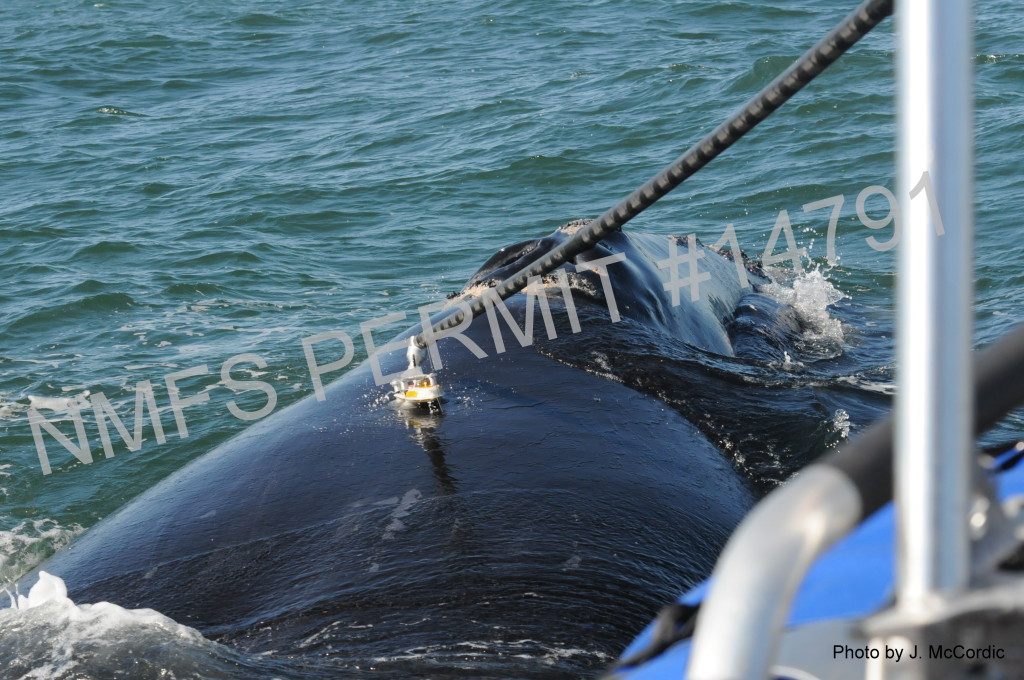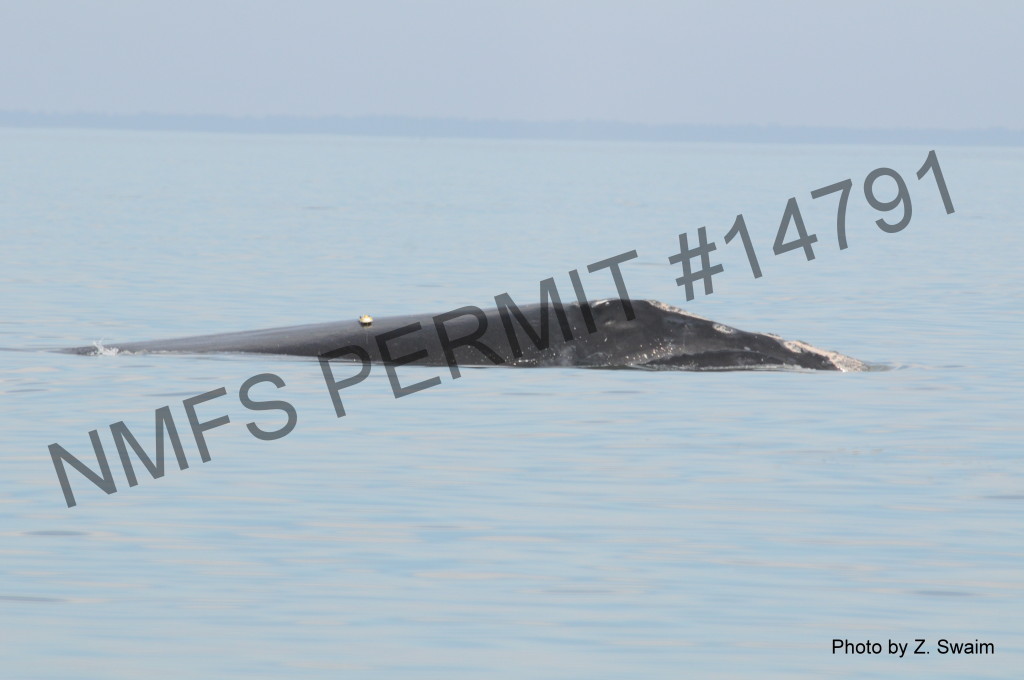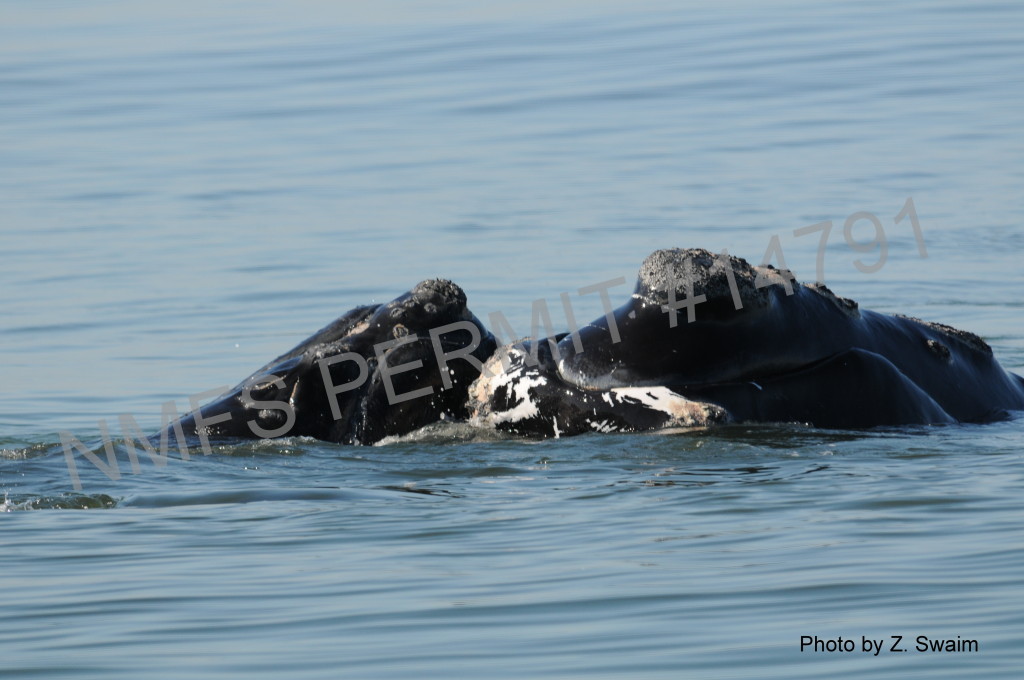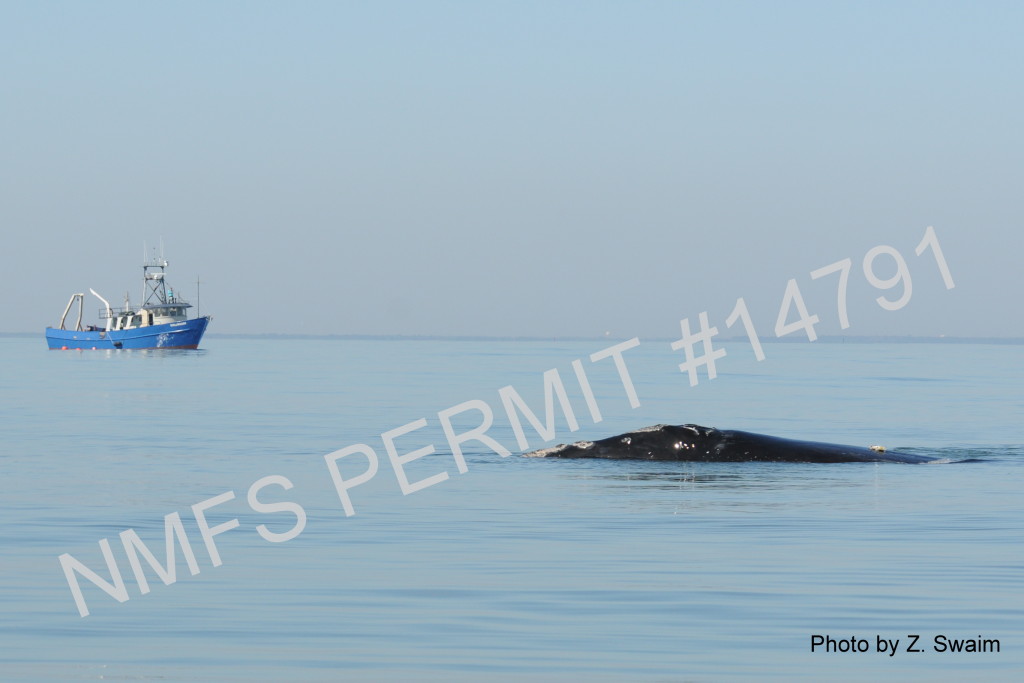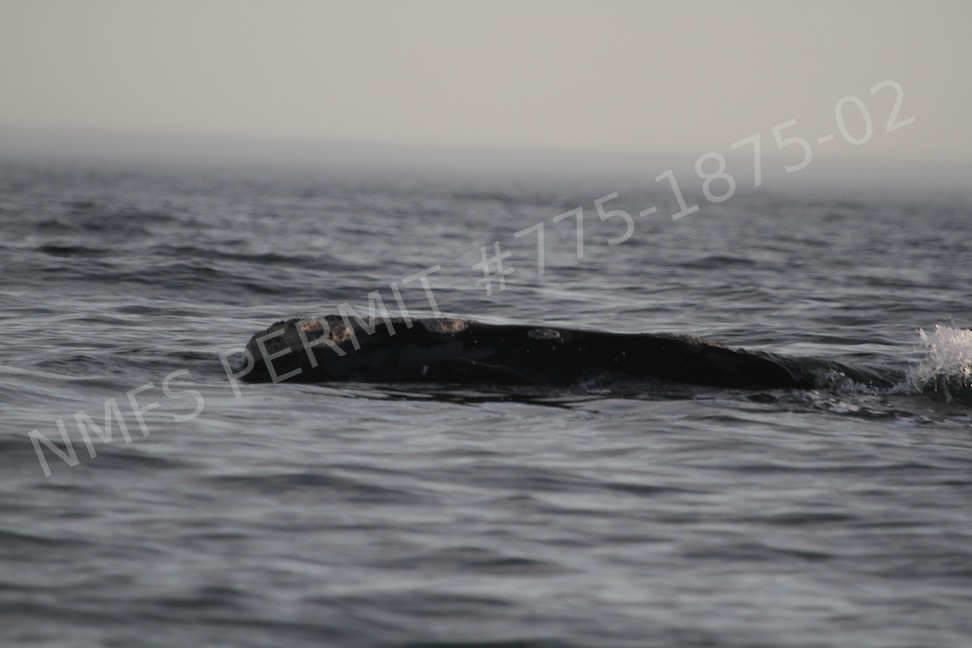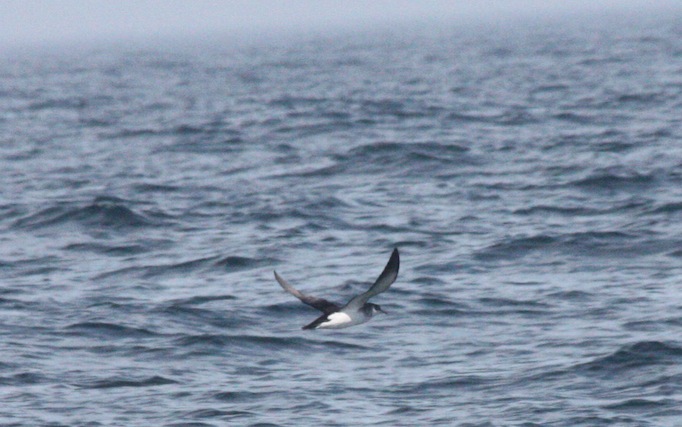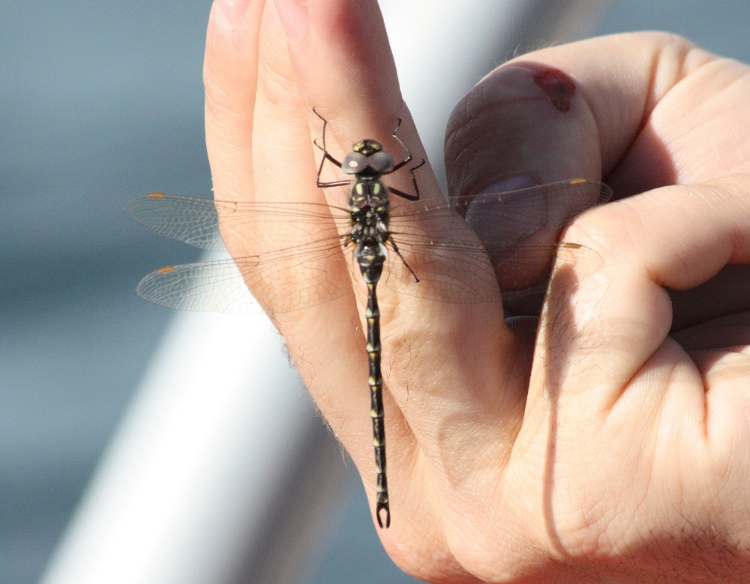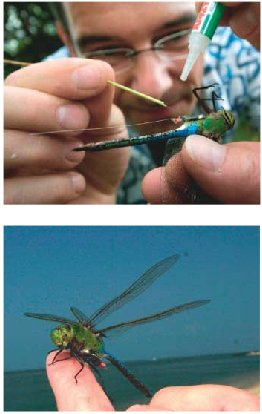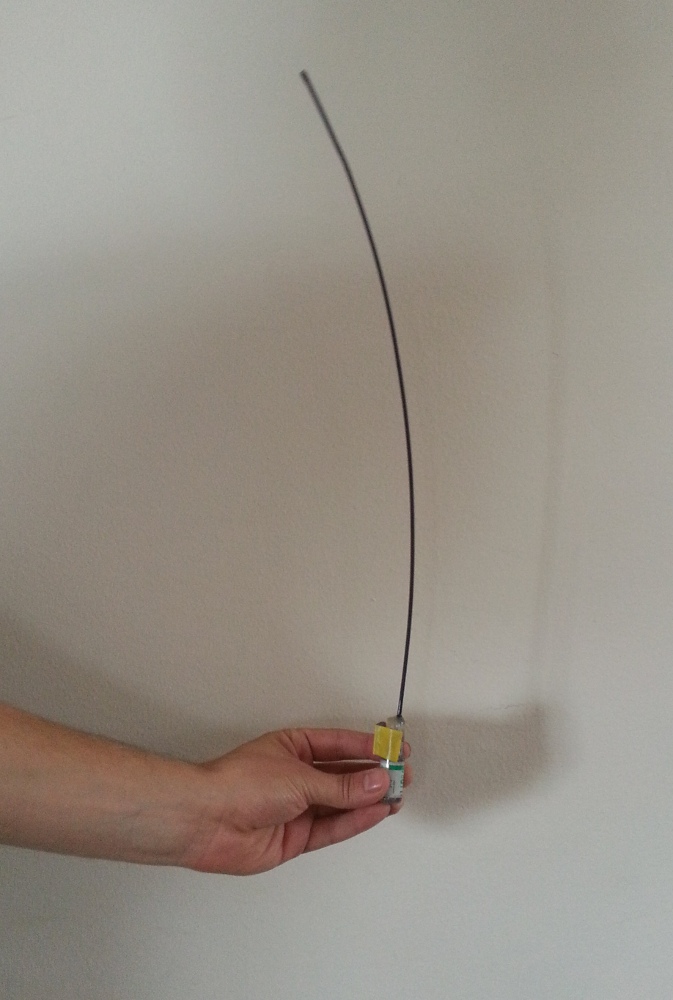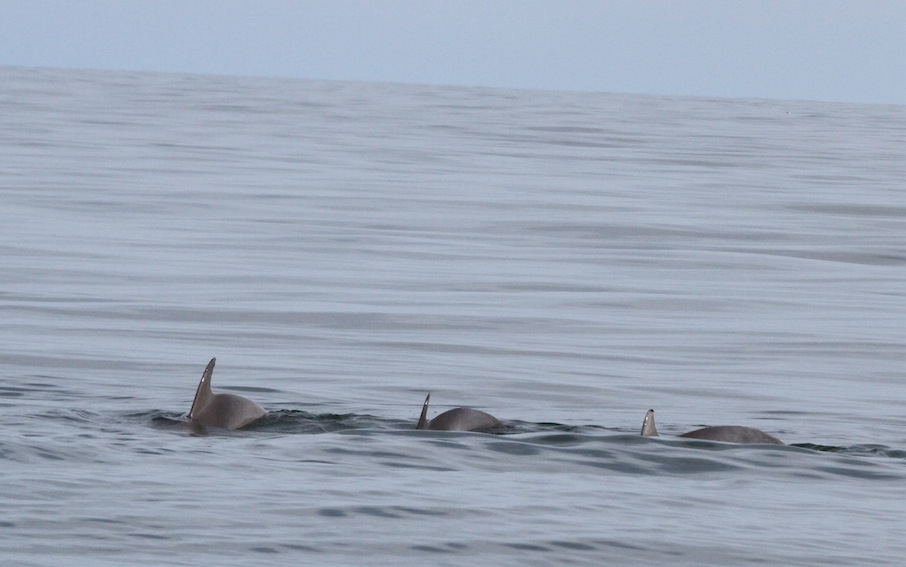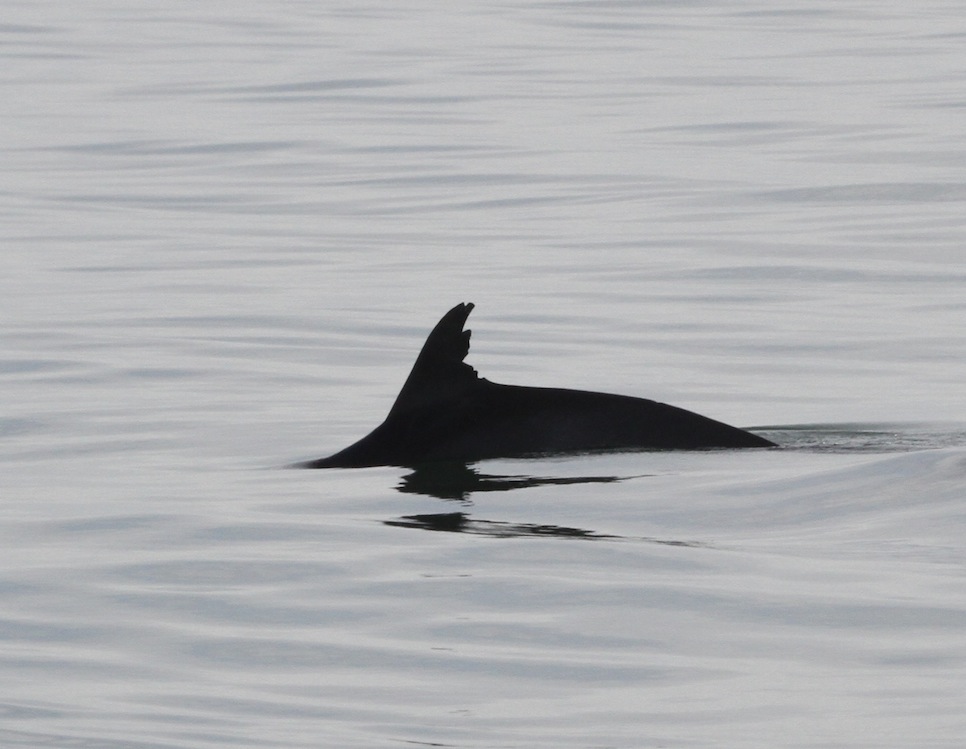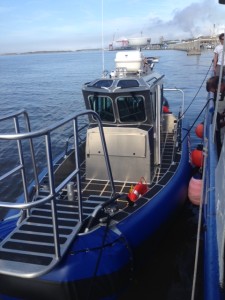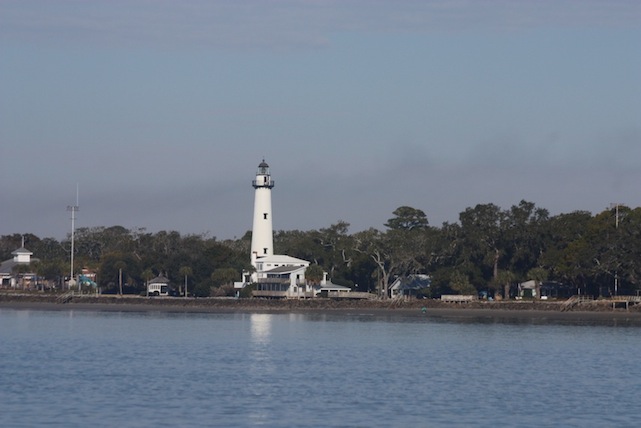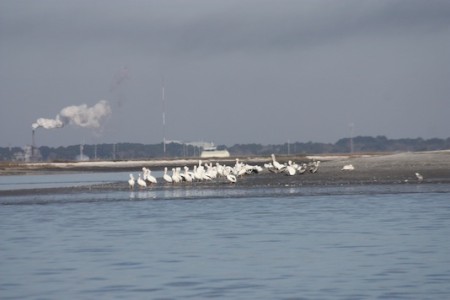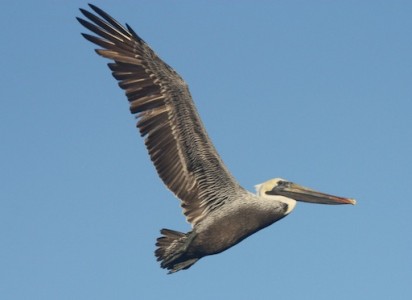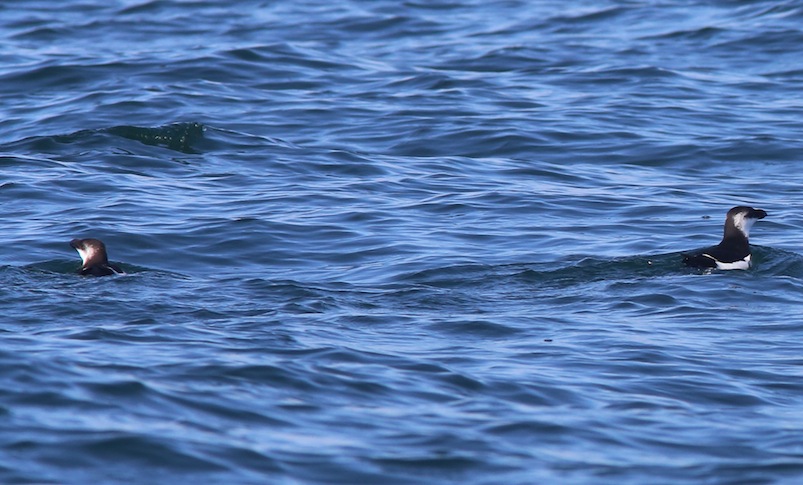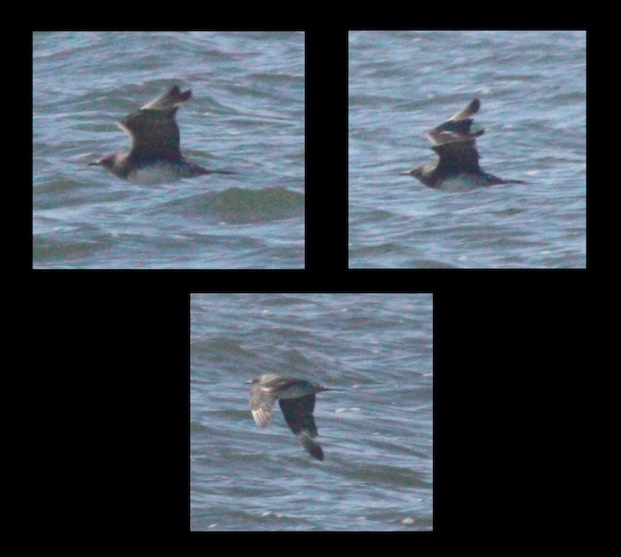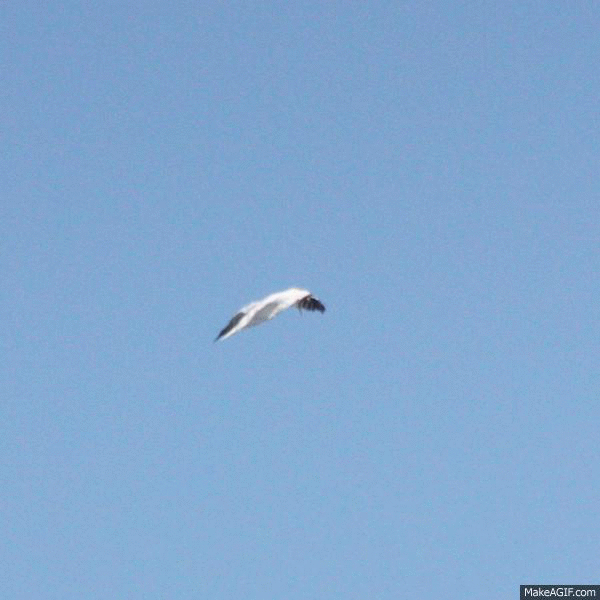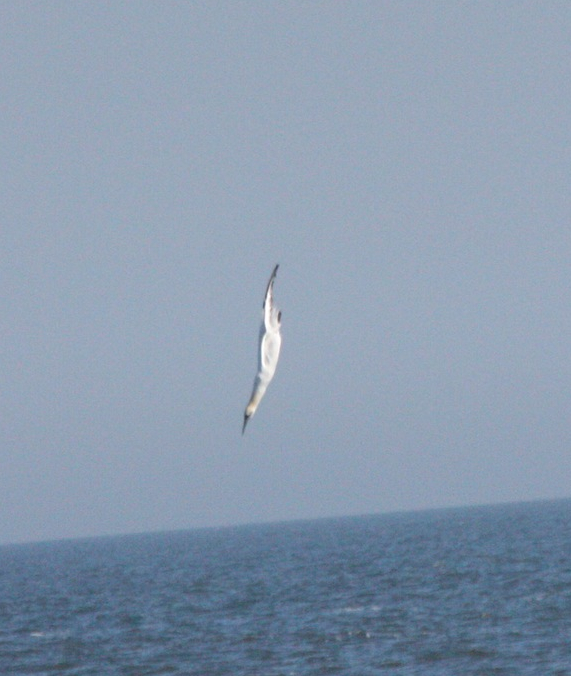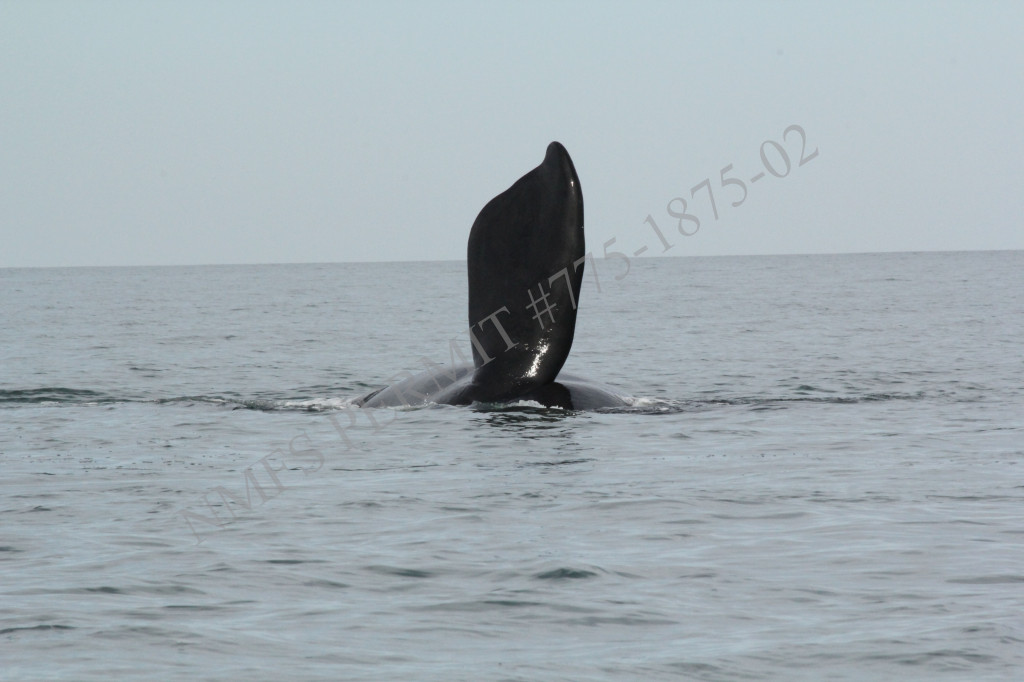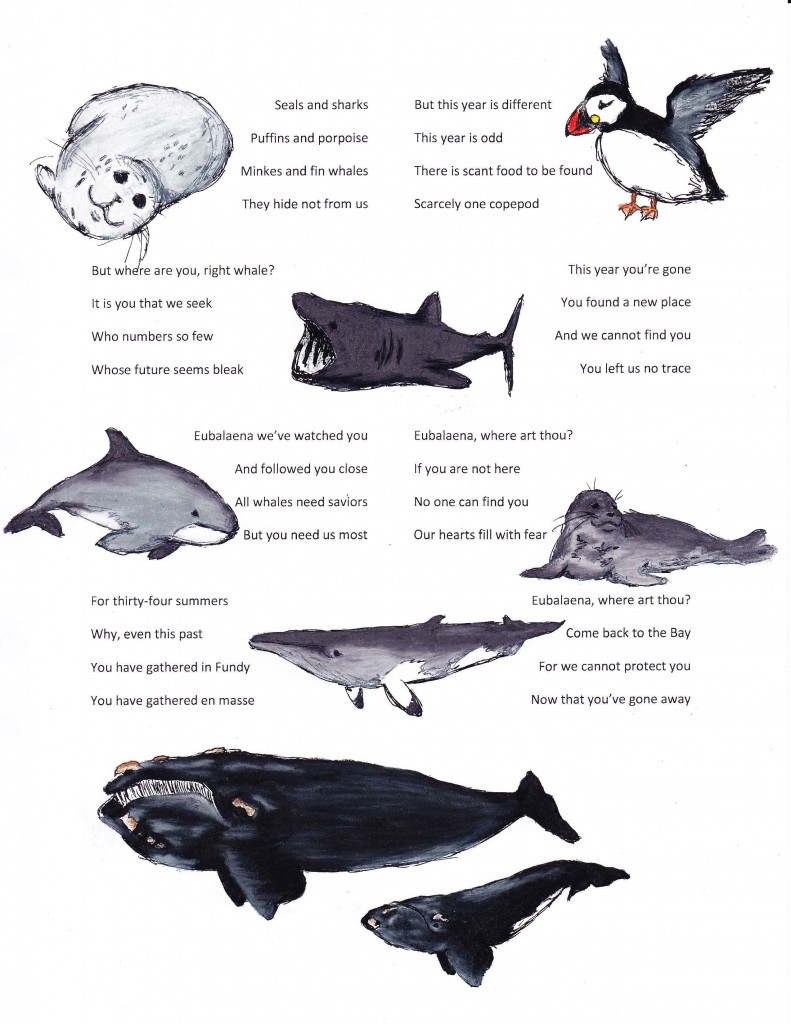Sunday, February 16:
Given our unusually long window of nice weather, we decided to try our luck offshore. On the way, we happened upon a mom/calf pair that we have seen before this year: #2040 (Naevus) and her calf. Since we had already tagged this mom, we left her and her calf and continued on our journey towards the southeast. The ocean was fairly quiet on the way except for a few loggerhead sea turtles, a handful of birds, some clumps of Saragssum seaweed, and two shiny Valentine’s Day balloons (which we of course picked up). Then, seemingly out of nowhere, we saw some dolphins up ahead. At first I thought it was just a small group of bottlenose dolphins, but as we got closer, I saw that there was something slightly different about their coloring. As it turns out, these were spotted dolphins! This being the first time I had ever seen spotted dolphins, I was ecstatic. I also happened to be on the bowsprit when we first found them, giving me a gorgeous view of the individuals who decided to hitch a ride in our bow wave. The Duke team took a couple of biopsy samples before we left the dolphins to rendezvous with the R/V Stellwagen.
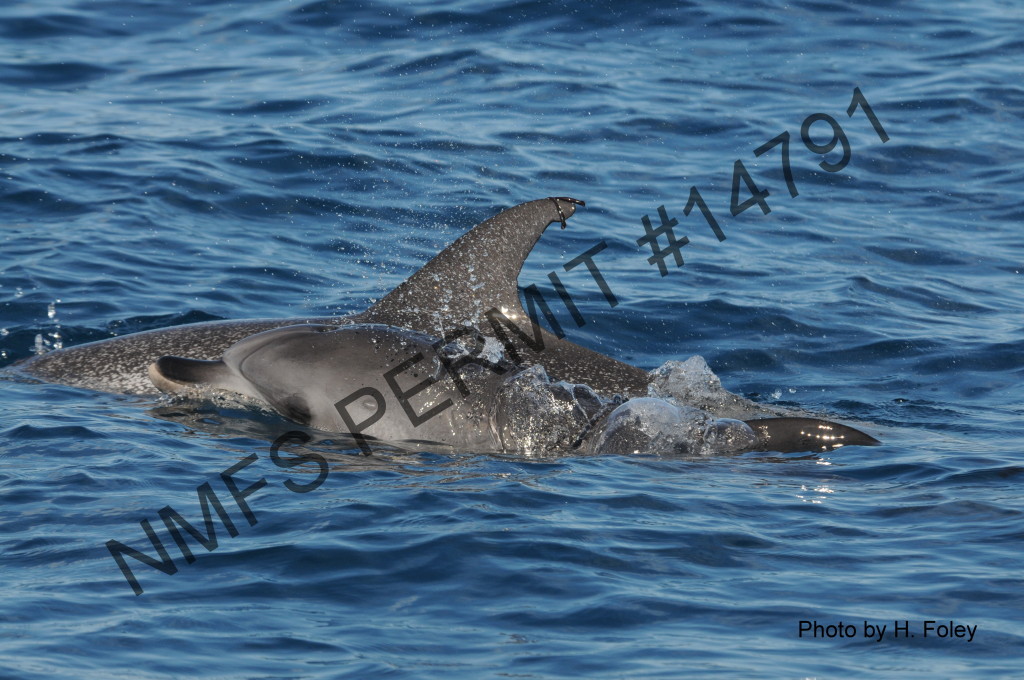
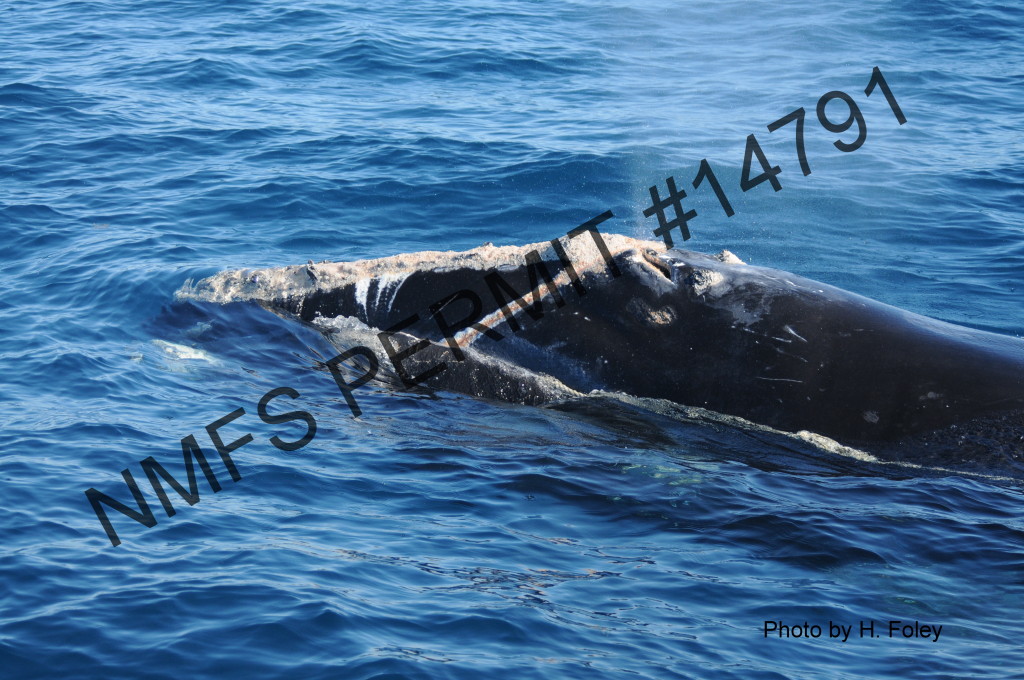
Between the dolphins and the Stellwagen, though, there was a blow in the distance followed by a pair of flukes: we found ourselves a right whale. Upon closer inspection and confirmation from the offshore survey plane, this single adult whale was entangled and had line trailing behind it.
We got a DTAG on it so that the Stellwagen could keep up with the whale until the disentanglement team could get to the location and add their satellite telemetry buoy. Once the DTAG came off and the telemetry buoy was on, the Stellwagen steamed even farther offshore on an overnight trip to swap out some autonomous recorders.
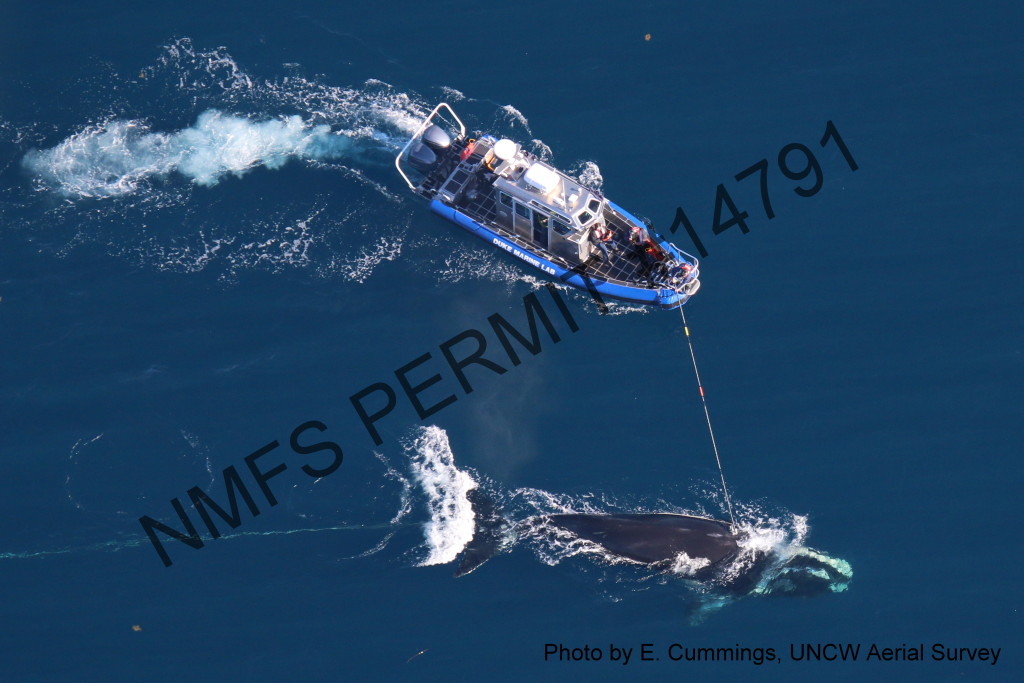
For more information on what happened with the entangled whale after we left the scene and over the course of the next morning, check out this article by the Savannah Morning News.
Jess McCordic
